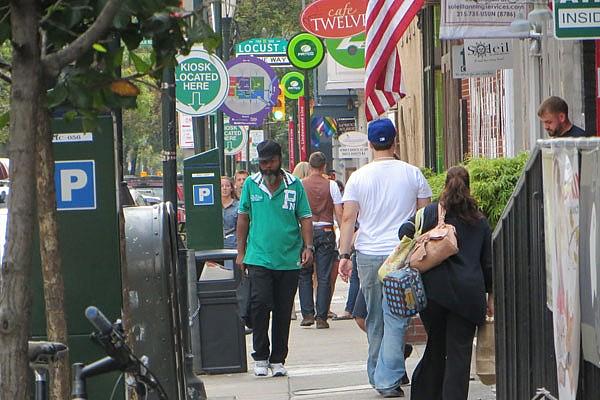Real estate agents tout walkability in Philadelphia
Walkability and good public transportation can improve the health of residents in the neighborhood. This story is part of the "Designs on Health" series, produced by 2012 Dennis A. Hunt Fund for Health Journalism fellow Taunya English, a senior reporter for the WHYY/NewsWorks Health and Science Desk. The series looks at how neighborhood influences a person's health and the power of place. Other stories in the series include:
Experts urge assessing health impacts before proceeding with new projects
Stealth health: 'lower-calorie freight train' changes show up on menus
Penn researcher explains some basics of 'built environment' research

Home sellers often use the phrase "Just steps away from ..." to signal a property is pedestrian friendly. These days, some real estate ads tout what's called a Walk Score.
"You can plug in an address or ZIP code, and it will return a score from 0 to 100 telling you how walkable a neighborhood is," said Sandy Smith, editor of the Philadelphia Real Estate Blog.
He says Washington Square West is, arguably, one of Philadelphia's most foot-friendly places. It rates a 97 on the Walk Score scale and has a mix of homes and things to do, and a major bus line runs through the area.
"Good public transit helps reinforce walkability," Smith said.
The blocks are short, and named alleyways break up those blocks.
"Little narrow streets are pedestrian scale," Smith said. "Cars can't travel on them fast, so it's far easier for the pedestrian and the car to co-exist and for pedestrians to negotiate them safely without worrying about taking their lives in their hands."
Realtor Noah Ostroff of Coldwell Banker Preferred says walk scores may be more of a marketing tool for agents, not something buyers are requesting.
"They're not coming to us and saying, 'I want a Walk Score of 95.' They are not doing that," he said.
Ostroff said the ratings seem most helpful for out-of-state customers, or people who use an online, self-service site, such as Zillow.
"I'm not sure that people know what they mean all the time, but then again the people who do know what they mean use them and hold a lot of weight in them," Ostroff said.
In Philadelphia, walkers have a local online source to consult.
"Finding a place that you are going to live often causes us to think deeply about the place and the physical infrastructure around us," said Robert Cheetham. A planner at his company, Azavea, designed walkshed.org.
Instead of a general walk-friendly score, Walkshed gives people ideas of how easy it is to get on foot to the things they care about most.
"So you could say: 'Being close to a grocery store is really important. Being close to a pharmacy is kind of important, but being close to restaurant is, eh, somewhat important, but less so,'" Cheetham said.
Walkshed also maps barriers in the landscape — such as steep slopes or rivers — to better guage walkability.
"If there are three dry cleaners and two pizza places, but if they are on the other side of the Roosevelt Boulevard, as the crow flies, they are close, but they might as well be miles away," he said.
Disclosure: Azavea is a content partner for Newsworks.org
This story was produced as part of a project for the Dennis A. Hunt Fund of the USC Annenberg School of Journalism.
This story was first published on October 24, 2012 by NewsWorks

